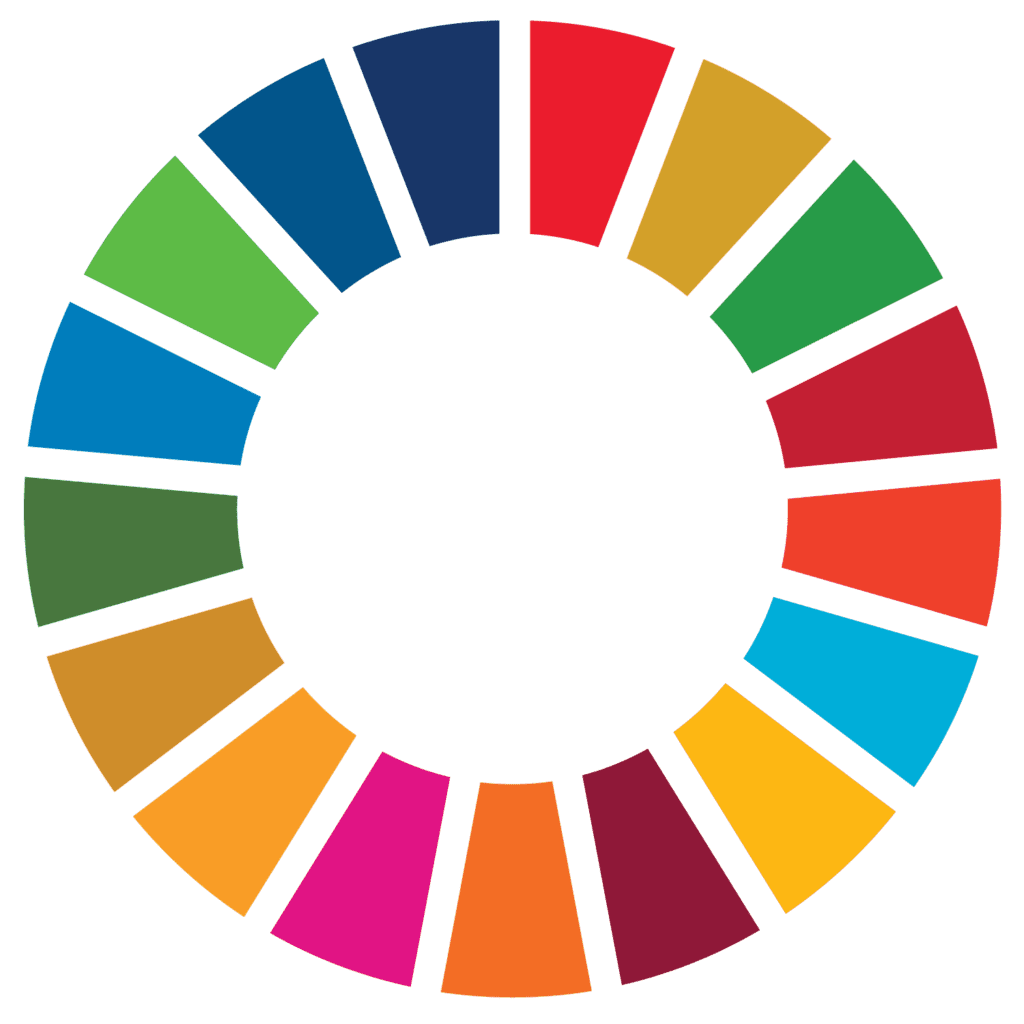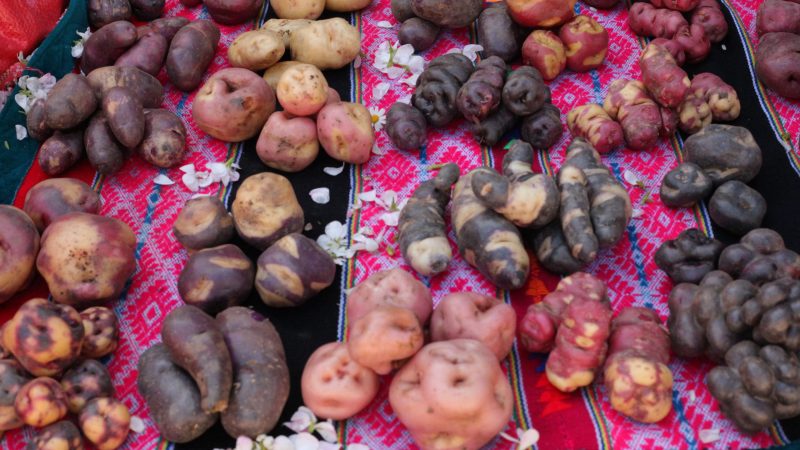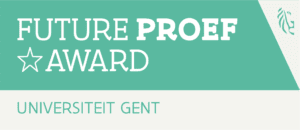Weaving social networks for agrobiodiversity governance in Peru


Why agrobiodiversity governance?
Agrobiodiversity is the varieties of plants, animals and microorganisms that contribute to food and agriculture. This way of production is highly dynamic and funded upon interactions between human and non-human factors, co-evolving along the changes in societies and environment (Visser et al., 2019).
Nowadays multiple drivers are leading to the erosion of agrobiodiversity. Among these are the structural transformations of rural areas, e.g. increasing urbanization and rural-urban migration, the increasing presence of modernized agriculture and market-oriented production systems that are introducing uniformity of crops, and the variation in seasonal weather patterns and temperatures (Nazarea, 2017).
Farmer’s decision to maintain an agrobiodiverse system depends, to a certain extent, on their individual reasoning and incentives (Bellon, 2004). They are usually members of specific communities, sharing collective cultural identities and social norms, like certain indigenous or peasant groups (Visser et al., 2019). They are also often smallholder farmers in situations of poverty and malnutrition, who continue to implement traditional agricultural practices (Bellon, 2004; Tobin et al., 2016; Zimmerer, 2014).
Some places in the world display outstanding levels of agrobiodiversity, one of the most important ones is in South America: The Peruvian Andean mountains. This area presents a complex geography, where different crops and tubers have been cultivated for millennia.
One of the most exceptional crops is the potato. This tuber, native of the Andes, was domesticated approximately 8,000 years ago (Centro Internacional de la Papa, 2017). It is estimated that just in the Peruvian Andes, there are 4,000 varieties (Tobin et al., 2016). Native potato varieties constitute a fundamental livelihood component for smallholders in the highlands.

Foto: Maria Cordero-Fernandez
Farmer-based agrobiodiversity governance offers potential for strengthening food security of rural populations, conserving the biocultural heritage, and ensuring the persistence of traditional farming livelihoods. The role of collaborative governance has been analyzed for different natural resources, but it has been shortly discussed for agrobiodiversity, mainly in a complex context as the Peruvian Andes.
Cordero-Fernandez aimed to fill that gap by researching about this, investigating the collaborative agrobiodiversity governance through the traditional social dynamics: management of communal land, labor relations, and knowledge sharing, in Paucartambo-Cuzco.
The sampling design was based on the convenience of deeply engaging with the custodians in different arenas to generate a profound understanding of their communal dynamics, their ways of production, social networks, and motivations toward agrobiodiversity maintenance. Cordero-Fernandez chose the participants of her thesis to be potato custodians (n=9) who were affiliates of the association AGUAPAN, delegation Cuzco.
The main data source for this research was based on primary data collected during a period of four months, from April to July 2023, using semi-structured interviews, ethnographic observation, and surveys to determine their specific social networks. Secondary data was gathered from past analyses related to the maintenance of agrobiodiversity in the department of Cuzco.
Who participates in the weaving of agrobiodiversity?
Cordero-Fernandez made 5 categories of actors that were involved on the social networks for the maintenance of agrobiodiversity, but the main one that she analyzed in her thesis is the “guardians”. They are members of the Association of Native Potato Guardians of Peru (AGUAPAN), which is a non-governmental organization that operates at a national level in nine regions. This organization has a bottom-up approach, which means that they promote self-management processes of members and also help strengthen their capacities.
The next category of actors is the custodians, referring to people who maintain several varieties of native potatoes without being part of any specific (non-) governmental organization. The terms “neighbors” and “relatives” in the figures below refer to peasants who are related in a certain way to the guardians.
Defining the current weaving patterns
Cordero-Fernandez aimed to make maps of the social networks of the guardians over five years (2018-2023). In the figures below, you can see some examples of these network mappings for native potatoes from AGUAPAN guardians. The size of the node represents the number of native potatoes the guardians maintain, and the lines define the interactions. The arrows indicate the direction of the interactions, which can be uni-directional or bi-directional.

Figure: Seed circulation network; Maria Cordero-Fernandez
Seed circulation
This network is the largest one from the case study. Cordero-Fernandez noticed that the seed circulation between relatives and neighbors had diminished considerably due to the emigration of the young members of the households.
The majority of the interactions within this network took place informally between the custodians who gathered at the different community fairs. At these fairs, they often interacted as buyer and seller of seeds, instead of the traditional way of trading seeds with each other. This is because the municipality promotes a sense of competition between the farmers on these fairs.

Figure: Knowledge circulation network related to native potatoes production, use and benefits; Maria Cordero-Fernandez
Knowledge circulation
There are three types of actors in the network of knowledge circulation: organizations, relatives, and guardians. The ways of interaction between them are very much related to how knowledge is being valued and perceived. Cordero-Fernandez noticed that this type of interactions happened mostly within the communities, and that the technical knowledge seemed to be mentioned the most. It was also clear to her that there was a lack of recognition of the role of women in knowledge circulation dynamics.

Figure: Collaboration network related to native potatoes production; Maria Cordero-Fernandez
Collaboration networks
This network focuses on the collaborations between the guardians to produce native potatoes, and the main actors are relatives of the farmers. This is because they often live close to the guardians, and they can be trusted by them. However, there has been a disruption of the traditional reciprocate work and rotational fallow in the communities.
Why do these practices persist?
Based on the results of Cordero-Fernanez’s thesis, you could ask yourself: why do farmers still maintain their agrobiodiverse production? The answer lies in their cultural identity. During the research, peasants insisted on three main aspects that push them to maintain their native potatoes.
The first and most important reason for the farmers to cultivate multiple varieties of potatoes is that it makes their meals more diverse. This is very important for them since they do not always have access to other crops due to the ecological conditions of the mountains where they live.
Another main aspect is the value they assign to maintain their agricultural heritage. Passing the seeds and knowledge about this way of production from generation to generation is very much engrained in their culture. It makes them feel proud of their identity.

Foto: Maria Cordero-Fernandez
The last aspect is the social recognition of being custodians of the potatoes, which could be because of the competitions in the fairs. Peasants’ involvement in the competitions is not only related to the price, but also the recognition of their peers. Usually, in their communities, guardians have been considered “crazy” for keeping a productive system that is not profitable. Nonetheless, the governmental recognition at the fairs makes them feel valued and provides a platform to share with other custodians.
The need for collaborative governance
Now that we have an understanding of the actors and their interactions, the question is how these networks can benefit the maintenance of agrobiodiversity. First, it is important to reconsider that these networks occur for different collaborative actions considered (seed, knowledge, and collaboration) between the different actors involved at different levels (household level, communal, local, and trans-local level).
Emerson et al., (2011) describe in their framework that this sense of collaboration is something that comes from within the actors. Their level of collaboration depends on their engagement, shared motivation, and capacity for joint action. If these aspects are present within their community, they will collaborate more. When this happens, there will of course be collaborative outcomes.

Foto: Maria Cordero-Fernandez
In her case study, Cordero-Fernandez used a bottom-up approach, so most of the interactions between the stakeholders can be explained by informal “rules of the game”. These informal rules mostly come from traditional practices of reciprocity. Examples of these are the trading of seeds and the labor dynamics between the actors. However, it is important to realize that power relations can influence these collaborative relationships, not everyone has the same authority.
Cordero-Fernandez noticed that a lot of the networks were small in size, so the possibilities of collaborating are smaller. Therefore, the impact these collaborative actions have is also rather small, and there seems to be a lack of proper platforms for the members of the community to talk with each other, which weakens their interactions.
She also saw that more and more farmers are moving away from traditional ways of interacting with each other. They are interacting within a more organized and higher-level structure. This is mainly because of the surge in individualistic behavior within the communities, which creates conflict between them.
This can be a consequence of the “new” management system and institutionalized structures, like the fairs and the formal organization AGUAPAN. This is a more top-down approach, but we cannot forget that the farmers play a very important role themselves. They are just being pushed towards valuing an income-oriented lifestyle instead of their traditional ways of living.
This is why Cordero-Fernandez provides recommendations for promoting collaborative agrobiodiversity governance. She tells us that it is important to continue with the actions to strengthen the local capacities of custodians. This refers to governmental and non-governmental programs and projects that go beyond seed circulation but also integrate both technical and traditional knowledge, as well as potentiate leadership capacities.

Foto: Maria Cordero-Fernandez
The establishment of more spaces for the integration of custodians, like fairs, is also very important. These spaces need to go beyond mere meeting spaces for competition and need to become places where custodians and other stakeholders can properly integrate.
When these actions are put into place, this will promote agrobiodiversity. Cordero-Fernandez pleads for the consideration of practices that integrate economic incentives, and allow better livelihoods without leaving aside the valuable traditional practices. Simultaneously, it is important to not lose sight of the current asymmetric power structures like gender roles, formal-informal institutions, which impact how the actors can collaborate.
The role of the guardians from AGUAPAN becomes key to promoting this re-connection with the agrobiodiverse production system at a local level. Due to their position in the networks as bridging actors between their communities, other custodians, and formal institutions at higher levels like municipalities and NGOs. It is time for them to act accordingly!
References
Bellon, M. (2004). Conceptualizing Interventions to Support On-Farm Genetic Resource Conservation. World Development, 32(1), 159–172. https://doi.org/doi:10.1016/j.worlddev.2003.04.007
Centro Internacional de la Papa. (2017). Hechos y cifras sobre la papa. Centro Internacional de la Papa. https://cgspace.cgiar.org/bitstream/handle/10568/87957/CIP-Hechos-y- cifras-sobre-la-papa-Espanol-2017.pdf?sequence=1&isAllowed=y
Emerson, K., Nabatchi, T., & Balogh, S. (2011). An Integrative Framework for Collaborative Governance. Journal of Public Administration Reseach and Theory, 22, 1–29. https://doi.org/10.1093/jopart/mur011
Nazarea, V. D. (2017). Landscapes of loss and remebrance in Agrobiodiversity Conservation.
In Routledge Handbook of Agricultural Biodiversity (pp. 604–611). Routledge.
Tobin, D., Bates, R., Brennan, M., & Gill, T. (2016). Peru potato potential: Biodiversity conservation and value chain development. Renewable Agriculture and Food Systems, 1–14. https://doi.org/10.1017/S1742170516000284
Visser, B., Brush, S. B., Aistara, G. A., Andersen, R., Jäger, M., Nemogá, G., Padmanabhan, M., & Sherwood, S. G. (2019). The Governance of Agrobiodiversity. In Agrobiodiversity. Integrating knowledge for a sustainable future (Julia R. Lupp., Vol. 24). MIT Press.
Zimmerer, K. (2014). Conserving agrobiodiversity amid global change, migration, and nontraditional livelihood networks: The dynamic uses of cultural landscape knowledge. Ecology and Society, 19(2). http://dx.doi.org/10.5751/ES-06316-190201
